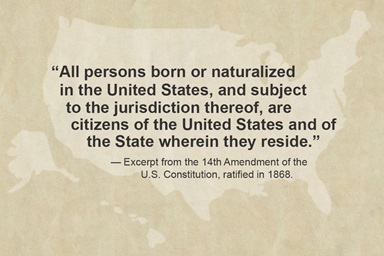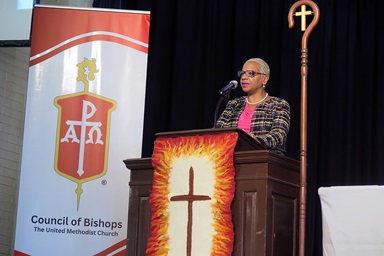Sunlight streams through the frosted-glass windows of Tulip United Methodist Church, a white, wooden building on the side of a little-used country road.
Entering a sanctuary that holds the tangy, old-wood scent of an antique shop, congregants catch up on news about far-flung children and grandchildren, and buck each other up through the maladies of aging and the routines of retirement.
The church cannot afford bulletins. But the 15 worshippers do not need them. The order of worship is as familiar and reassuring as a favorite recipe.
They share joys and concerns — one celebrates a local crafts fair she visited, the pastor expresses delight that his granddaughter lost a tooth. They pray, sing beloved hymns like “What a Friend We Have in Jesus,” recite The Apostles’ Creed taped to the front of their 1966 Cokesbury hymnals, take up an offering and listen to a sermon.
And then they have more fellowship.
“They are like family to me,” Ida Mae Nutt, 83, says of her fellow congregants. “But we’re not connected in any way except through the church.”
This spirit of community is why these 15 people keep not only the Tulip church open, but also three other nearby churches in Dallas County in south-central Arkansas. They rotate each Sunday among the four churches — Hunter's Chapel, Tulip, Waverly and Carthage — honoring the memories each of the buildings holds.
Their commitment to maintain all four churches is a story of sacrifice multiplied in small United Methodist congregations throughout the United States. Yet the best intentions are not always enough to keep rural churches going in an age when so many people and institutions — manufacturers, schools and businesses — have fled rural communities.
In 2009, 207 rural churches closed their doors. In the past decade, the number of rural congregations has declined by more than 3,000 to slightly more than 20,000 today.
United Methodist leaders, presiding over an aging denomination losing U.S. members and resources, are asking the church to place priority on building "vital" churches, and to hold bishops and pastors accountable for membership growth.
Many in the rural church feel they are being left behind precisely at their moment of greatest need.
Quick facts:
- Total number of United Methodist churches in U.S. : About 33,500*
- Number of rural churches in 2009: Slightly more than 20,000**
- Total number of U.S. churches in 2000: 35,947
- Total number of rural churches in 2000: About 23,400
- Clergy serving non-rural U.S. churches in 2009, including retired clergy: 11,600
- Clergy serving rural churches: About 13,900
- Full elders serving non-rural churches: 10,700
- Elders in rural churches: 5,980
*Numbers based on self-reporting to the General Council on Finance and Administration.
**Rural churches are defined as those in counties where there are 200 or fewer people per square mile. Number determined by matching churches with county codes and matching that with U.S. Census data. Not every United Methodist church in the U.S. reports its county code. All numbers are estimates.
Source: General Council on Finance and Administration
Hanging on
Nutt, who grew up Southern Baptist, married into Carthage United Methodist Church in 1950. She and her late husband, John, a longtime song leader at the church, enjoyed traveling to Saturday night "singings" at area congregations.
Back then, Carthage was a thriving sawmill town with grocery stores, service stations, a doctor's office, a drug store and an auto dealership.
Today, the town's population has dropped by half to slightly more than 400. The mill, sold years ago to a company based in Idaho, now employs few locals. Children, including Nutt's two daughters, grew up and moved away to look for work. A handful of churches are what remains of the community's once bustling downtown. Grass rustles on barren lots where many of the town's houses and shops once stood.
Nutt is the sole surviving member of Carthage United Methodist Church.
From a larger denominational perspective, there are concerns about the wisdom of keeping open four churches within a few miles of each other for just 16 official members.
The United Methodist Church has far more buildings than it needs, admits the Rev. Roger Grace, president of the United Methodist Rural Fellowship. Many were built when the main mode of transportation was a horse, and people only could travel a few miles to get to church.
"The ties many times are to the building, and it's very difficult for people to let go emotionally," Grace says. "If you think rationally and logically, it's not that difficult a choice. But if you think with your heart instead of your mind, this is what happens. There is a real sense of failure if people let go of their church."
Denominational leaders also worry that preserving smaller, "family" congregations limits outreach to newcomers. In Carthage, for example, the population is largely African American, but the four nearest United Methodist churches are all white.
And yet there is something both Wesleyan and Christlike in the efforts of members of even the smallest churches to keep faith alive in their communities, advocates for such churches say.
For her part, Nutt rebuffs requests from her daughters that she move to their cities. She feels needed in Carthage, where she is a bookkeeper for the town water department as well as her church's main caretaker.
She contributes about $145 a month to help pay for the pastor, the church's liability insurance, maintenance costs and apportionments. She cleans the inside of the church and weeds and trims overgrown bushes outside.
Each day draws her closer to God.
"I see how he has been with me all through my life," she says. "I have wondered many times how have I ever made it through. But it always comes back that God has been with me and taken me through all this. He is still watching over me today."
Like what you're reading? Support the ministry of UM News! Your support ensures the latest denominational news, dynamic stories and informative articles will continue to connect our global community. Make a tax-deductible donation at ResourceUMC.org/GiveUMCom.






